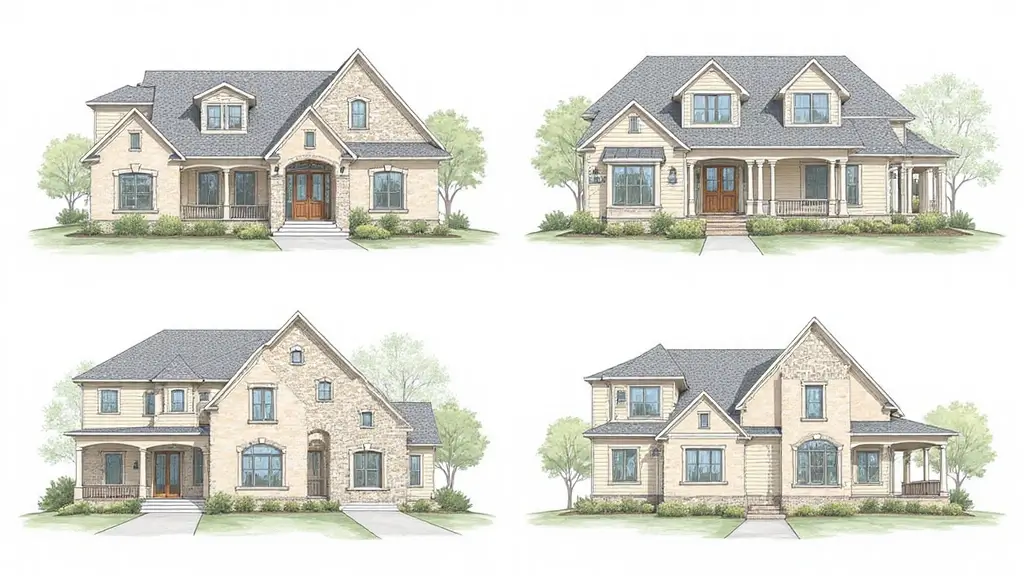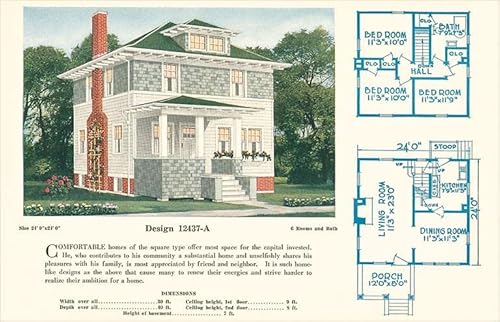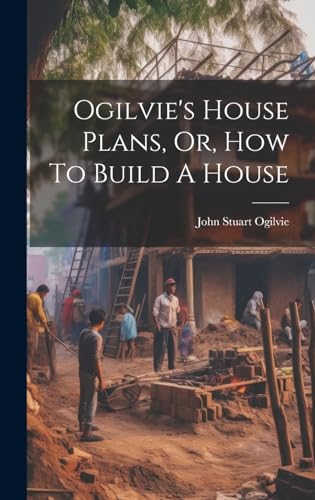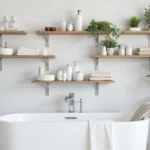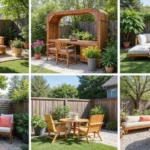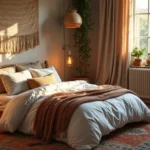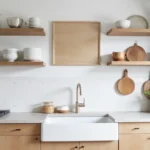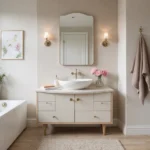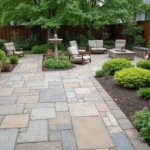Building a family home that embodies both comfort and sustainability is a dream for many.
The rise of eco-friendly housing has opened doors to innovative designs that not only prioritize family needs but also the health of our planet.
From smart layouts to spacious living areas, these modern two-story floor plans offer the perfect blend of style and functionality.
Join us as we explore 29 house floor plans that families will adore, while embracing a sustainable lifestyle.
1. The Eco-Modern Retreat
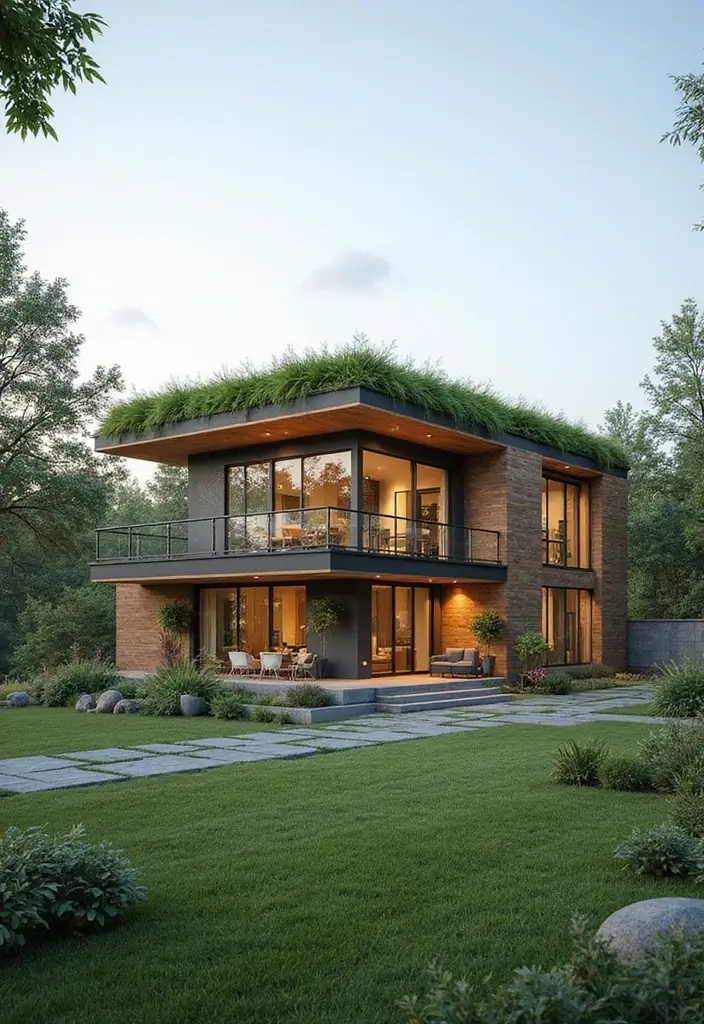
This stunning design showcases clean lines and a minimalist aesthetic. The extensive use of large windows invites natural light, reducing the need for artificial lighting.
With an open floor plan on the main level, family members can connect easily, whether cooking in the kitchen, lounging in the living room, or enjoying meals together in the dining area.
Upstairs, spacious bedrooms provide private sanctuaries for everyone. Consider including energy-efficient appliances and solar panels, which can significantly lower energy bills while boosting sustainability.
Additionally, incorporating a green roof can enhance insulation and promote biodiversity.
– Open floor layouts enhance family interaction.
– Use of sustainable materials like bamboo or reclaimed wood.
– Smart home technologies can monitor energy usage and improve efficiency.
2. The Family Nook
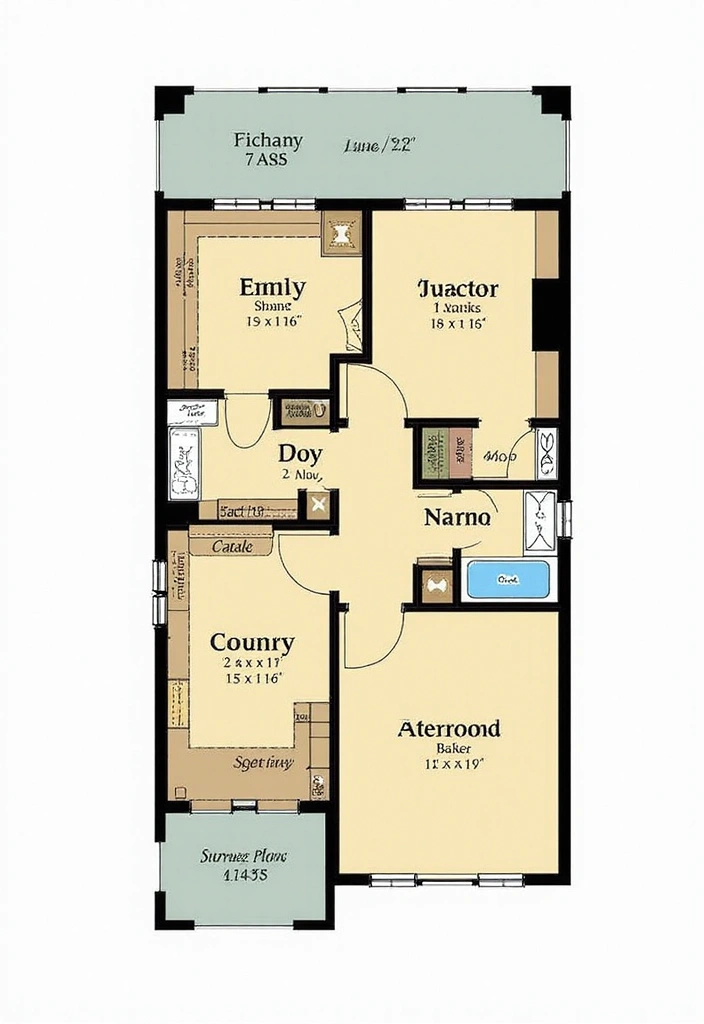
Ideal for large families, this floor plan features an expansive living area designed for quality time.
The first floor includes a spacious kitchen that seamlessly connects with the dining area, making family meals a delight. A cozy nook can be added for reading or playing games, reinforcing the home’s warmth.
To keep sustainability in check, opt for eco-friendly insulation and energy-efficient systems.
Further, consider adding a mudroom that not only helps keep the house clean but is also a practical feature for busy family lifestyles.
– Separate zones for working and relaxing.
– Large windows for cross-ventilation and natural air flow.
– Smart storage solutions to reduce clutter.
3. The Compact Family Hub
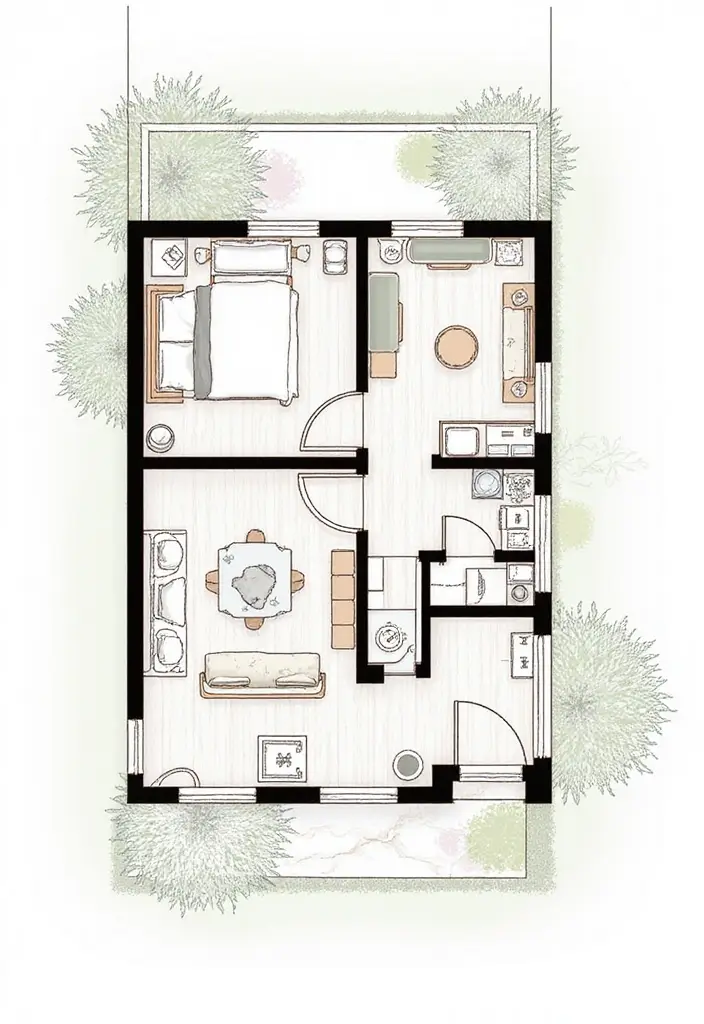
This compact but functional design highlights the efficiency of space without sacrificing style.
Utilizing vertical space allows for more living areas while keeping the footprint small, making it perfect for eco-conscious families.
The layout flows naturally, linking the kitchen, dining, and living areas in a cohesive space. Upstairs, bedrooms can be arranged to overlook the living area, creating an open feel while maintaining privacy.
Smart storage solutions are key in this layout; incorporate built-in shelving and multi-functional furniture.
– Incorporate vertical gardens on balconies.
– Use of reclaimed materials to enhance sustainability.
– Natural ventilation strategies can keep energy costs down.
A compact family hub doesn’t just save space; it creates harmony! Embrace smart storage and an open layout that fosters connection while keeping comfort and style in perfect balance.
4. The Nature-Lover’s Retreat
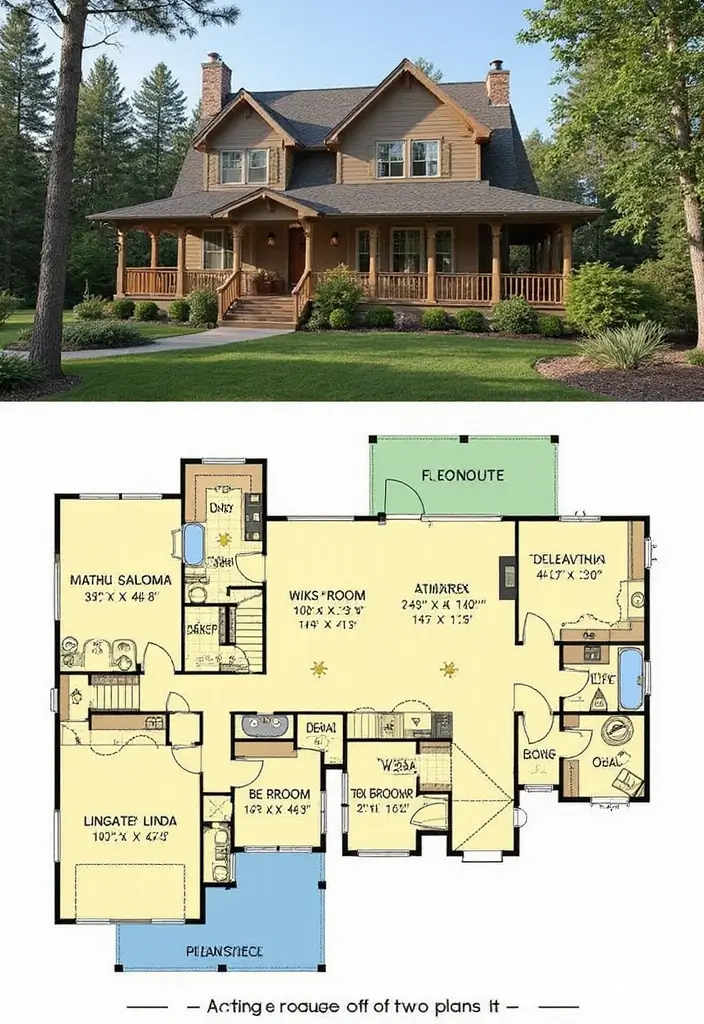
For families who cherish the outdoors, this home seamlessly blends indoor and outdoor living.
Featuring a wrap-around porch and expansive sliding doors, this design encourages enjoyment of nature while being eco-friendly.
On the main level, shared living spaces are designed for family gatherings, while the upper level provides private bedroom retreats with balconies that offer stunning views.
Integrating natural materials and native landscaping not only enhances aesthetic appeal but also promotes a sustainable environment.
– Rainwater harvesting systems can be added for outdoor use.
– Solar panels can power outdoor lighting.
– Large eaves provide shade and reduce heat in summer.
5. The Open-Concept Dream
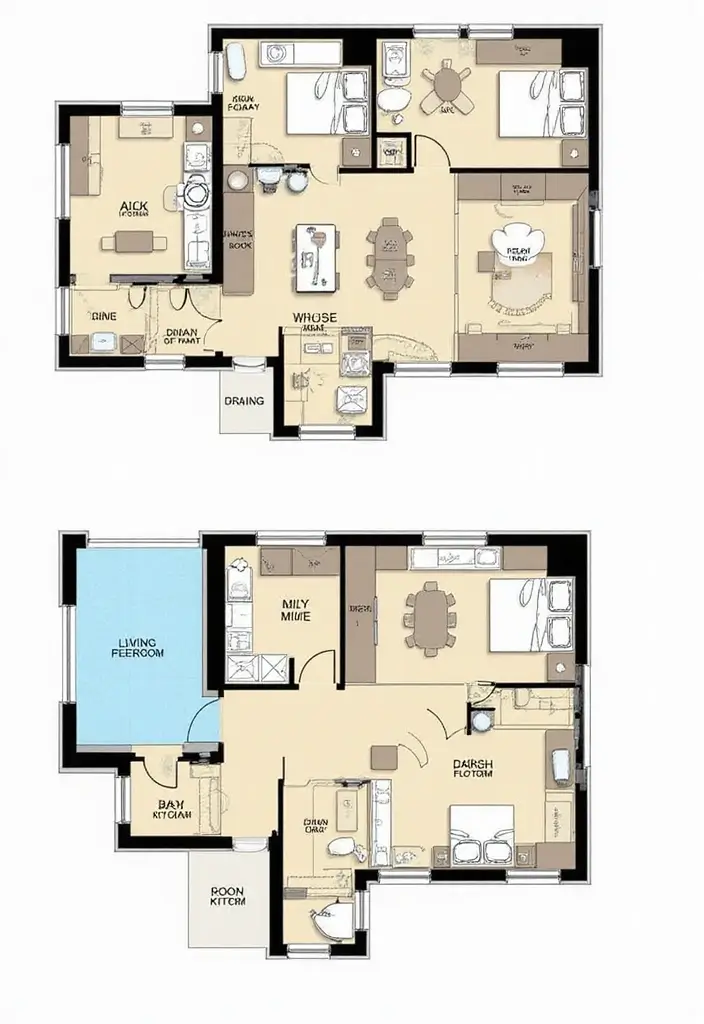
An open-concept floor plan maximizes light and space, making it ideal for family life.
This design features a continuous flow between the kitchen, dining, and living areas, making daily routines effortless and enjoyable.
Large islands can serve as both cooking and casual dining spaces, perfect for busy families. Incorporating eco-friendly materials like recycled countertops and bamboo flooring adds sustainability to this stylish layout.
Upstairs bedrooms can be designed with shared bathrooms to optimize usage while maintaining privacy.
– Accent lighting can define spaces without walls.
– Large windows and skylights can enhance natural light.
– Flex spaces can be created for a home office or play area.
6. The Multi-Generational Home
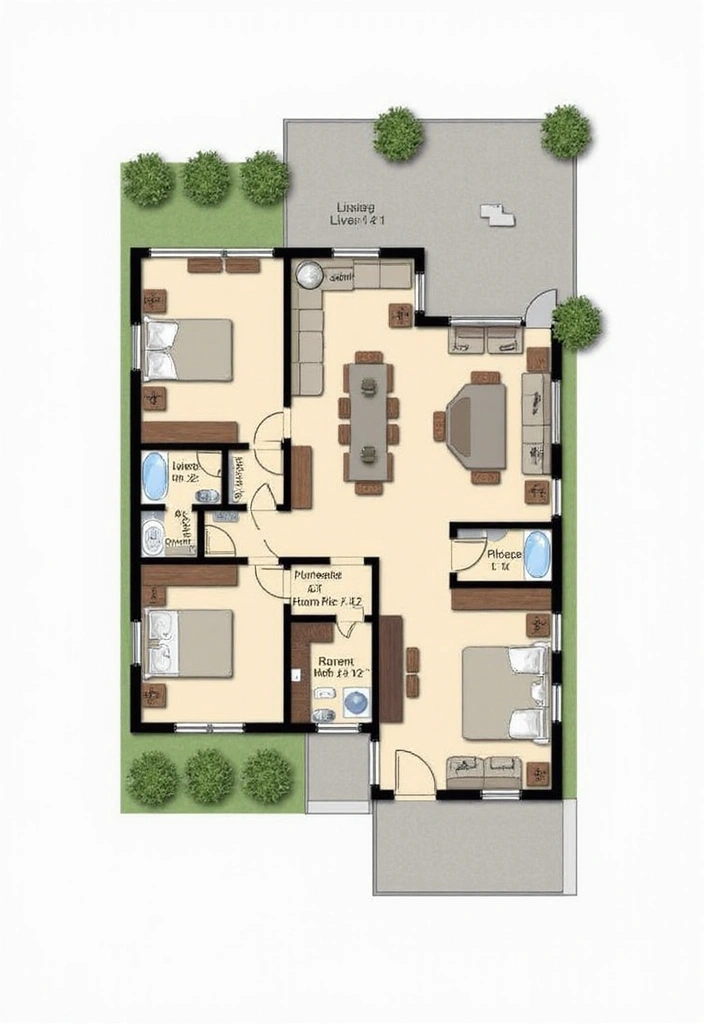
More families are choosing to live together, making multi-generational homes increasingly popular.
This design includes separate living areas, ensuring privacy while remaining connected.
On the first floor, a spacious master suite can be tailored for older family members, while the upper level features bedrooms for younger generations. Incorporating dual kitchens can be very practical, allowing everyone to share meals without being on top of each other.
Sustainability can be enhanced through shared resources, such as energy-efficient appliances and collective solar power, reducing utility bills for all.
– Include accessible features for easier mobility.
– Design common areas that promote family interaction.
– Ample storage to accommodate diverse needs.
7. The Elevated Sanctuary
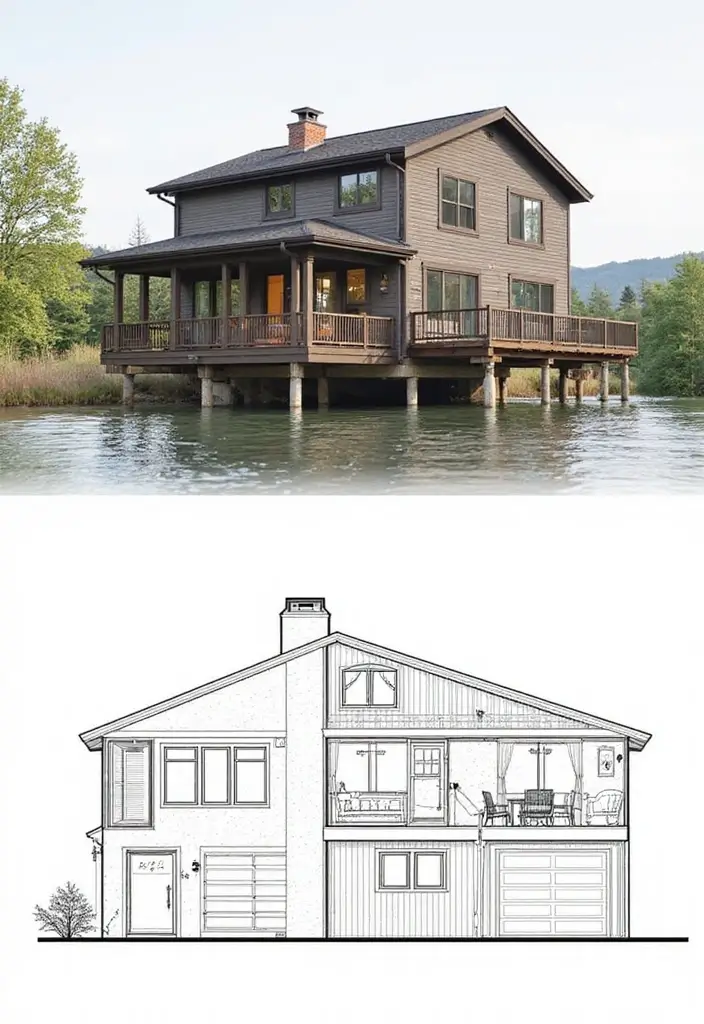
For families living in flood-prone areas, elevated designs can safeguard against water damage while offering unique views.
This layout features a raised first floor with stairs leading up to spacious living areas and bedrooms.
Large windows flood the space with natural light and provide panoramic views of the surroundings. Incorporating sustainable features such as permeable pavement and rain gardens can help manage rainwater runoff while enhancing the landscape.
The elevated deck can double as an outdoor living area, great for family gatherings.
– Use of non-toxic, durable materials for long-lasting designs.
– Build a strong foundation with environmentally-friendly materials.
– Create shaded spaces to stay cool.
8. The Customizable Family Layout

Every family is unique, and customizable floor plans allow for individualized touches.
This design encourages families to tailor spaces to their specific needs, whether that’s a playroom, home office, or gym.
Spacious common areas foster family interaction, while designated zones can provide a break from shared spaces. Sustainable materials and energy-efficient systems can be woven throughout the design, ensuring a smaller ecological footprint.
Consider using modular pieces that can be reconfigured as family dynamics change.
– Flex spaces allow for future growth or shifting needs.
– Incorporate movable walls to create versatility.
– Use eco-friendly insulation for all custom areas.
9. The Urban Eco-Haven
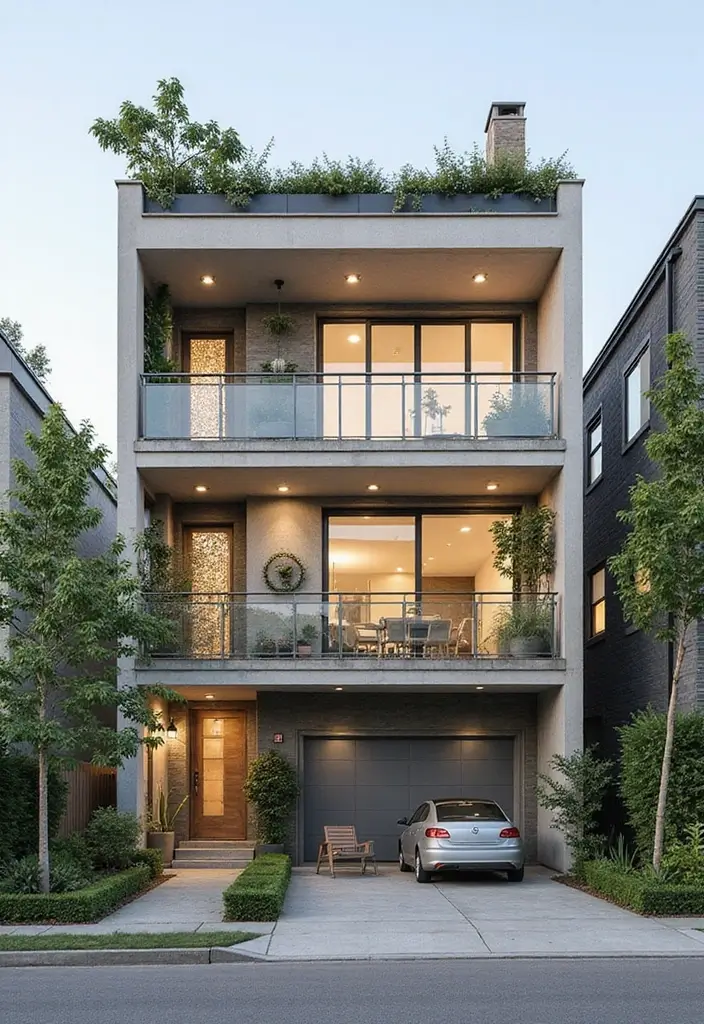
For families in urban settings, this design maximizes space while embracing sustainability.
Vertical living allows for a compact footprint, emphasizing functionality and style.
The open-concept main floor merges living, dining, and kitchen areas, making it an ideal spot for family gatherings. Sustainability can be achieved through energy-efficient windows and green roofs.
A rooftop garden can serve as an urban oasis, perfect for relaxing after a busy day.
– Use of smart technology for energy management.
– Rainwater collection systems can be used for gardening.
– Incorporate local materials to support the community.
10. The Family Farmhouse
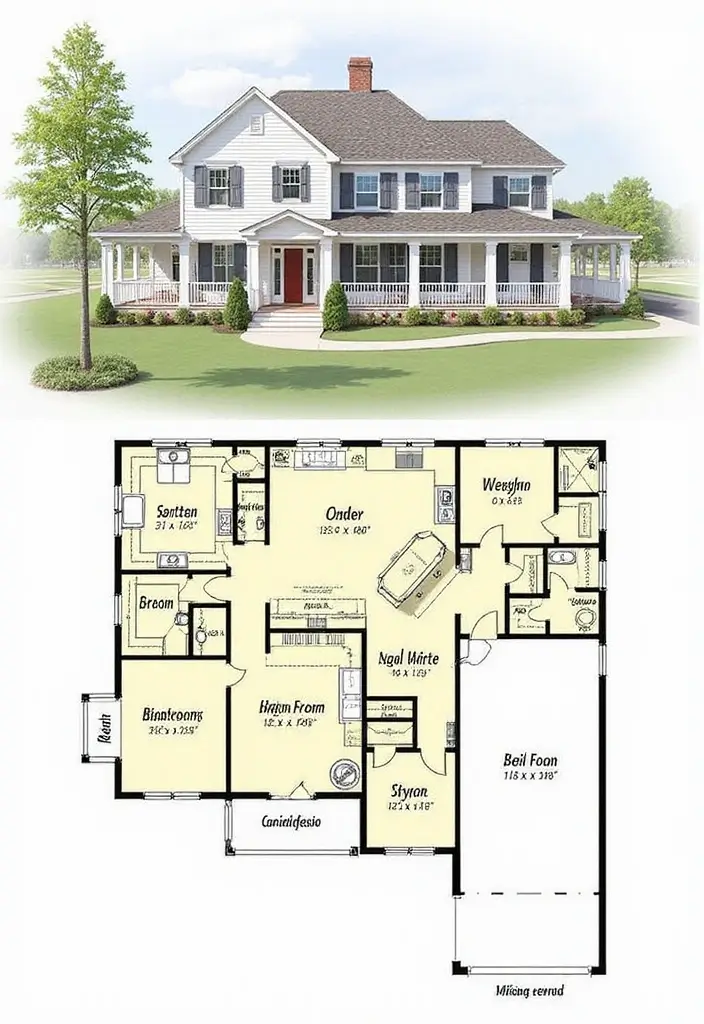
Inspired by classic designs, the family farmhouse is all about warmth and tradition.
This spacious layout features large porches and high ceilings that create a welcoming atmosphere.
An open kitchen and living area reflect the heart of family life, encouraging togetherness. The upstairs tends to have generously sized bedrooms, often with en-suite baths, promoting comfort.
Sustainable practices can be implemented through energy-efficient appliances and reclaimed wood accents.
– Build with local materials to reduce transport emissions.
– Incorporate passive solar design for natural heating.
– Design outdoor spaces for family gatherings.
A family farmhouse isn’t just a house; it’s a nurturing haven where traditions thrive and memories are made. Embrace sustainable living with an open heart and energy-efficient choices!
11. The Minimalist Marvel
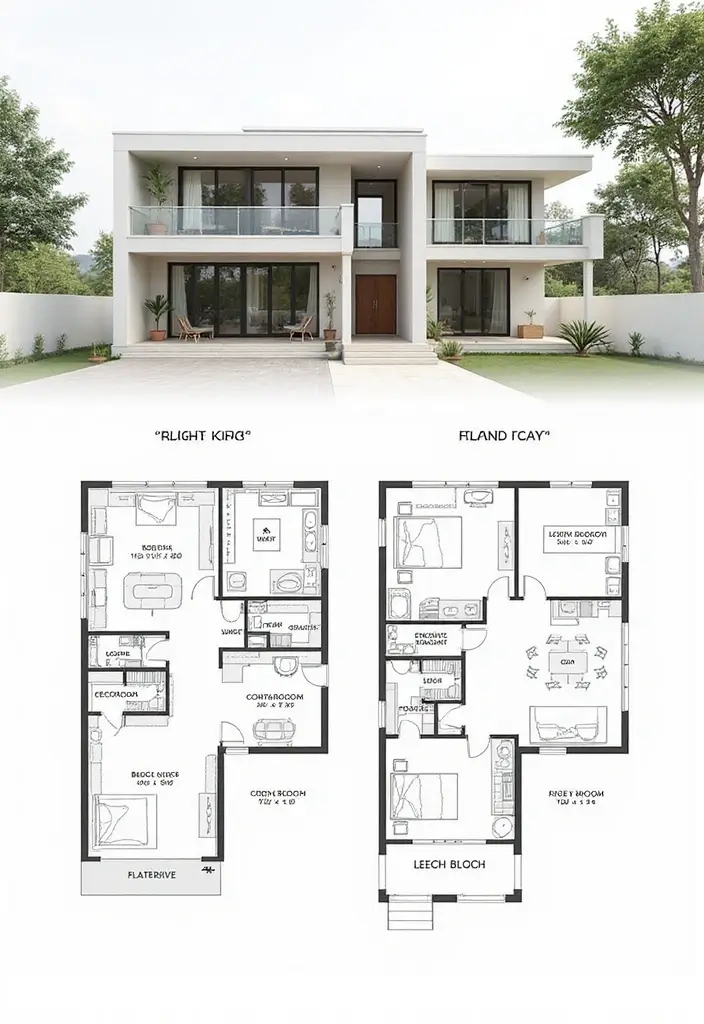
Simplicity is key in this minimalist design that promotes a clean, clutter-free lifestyle.
Open spaces flow together seamlessly, creating an airy atmosphere that feels larger than it is.
Every element serves a purpose, from multi-functional furniture to cleverly concealed storage solutions. Sustainable materials add elegance, while energy-efficient systems minimize environmental impact.
Consider incorporating greenery throughout the home to enhance air quality and aesthetic appeal.
– Keep surfaces smooth and easy to clean.
– Focus on a neutral color palette for tranquility.
– Use natural fibers to promote comfort.
12. The Tech-Savvy Home
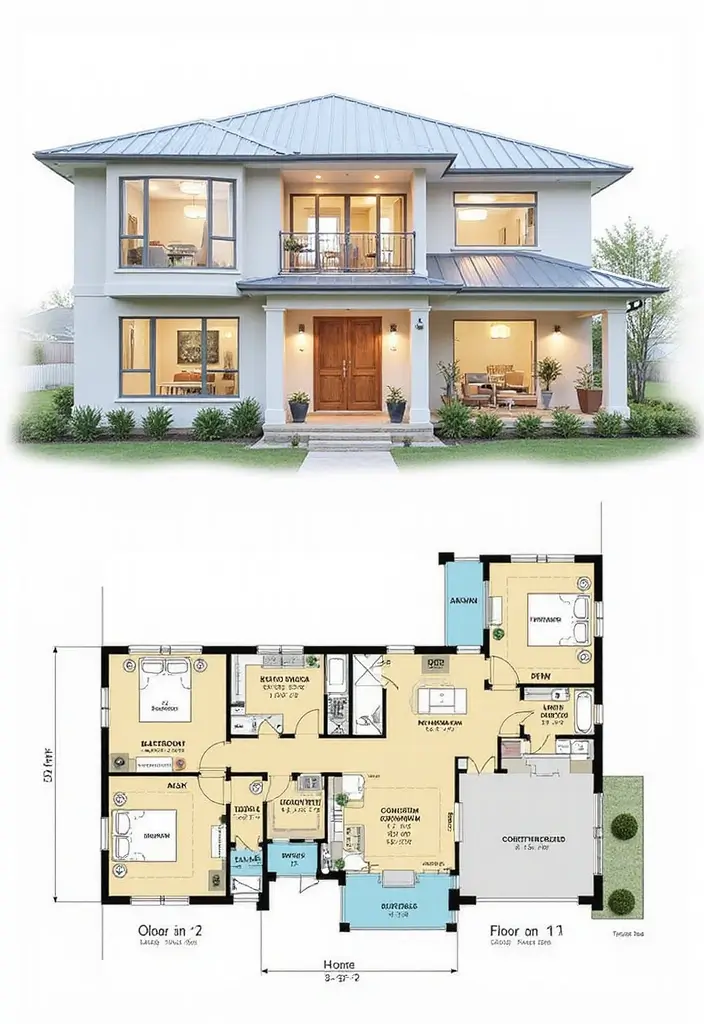
With technology becoming integral to daily life, incorporating smart designs can enhance family living.
This floor plan features home automation systems to control lighting, climate, and security.
Open floor layouts promote community and interaction among family members while also allowing for tech hubs in each space.
Energy-efficient systems cut costs and improve sustainability. Smart devices can monitor energy usage and provide insights for better resource management.
– Designate charging stations for devices.
– Incorporate voice-activated systems for convenience.
– Opt for appliances designed for energy efficiency.
13. The Mediterranean Getaway
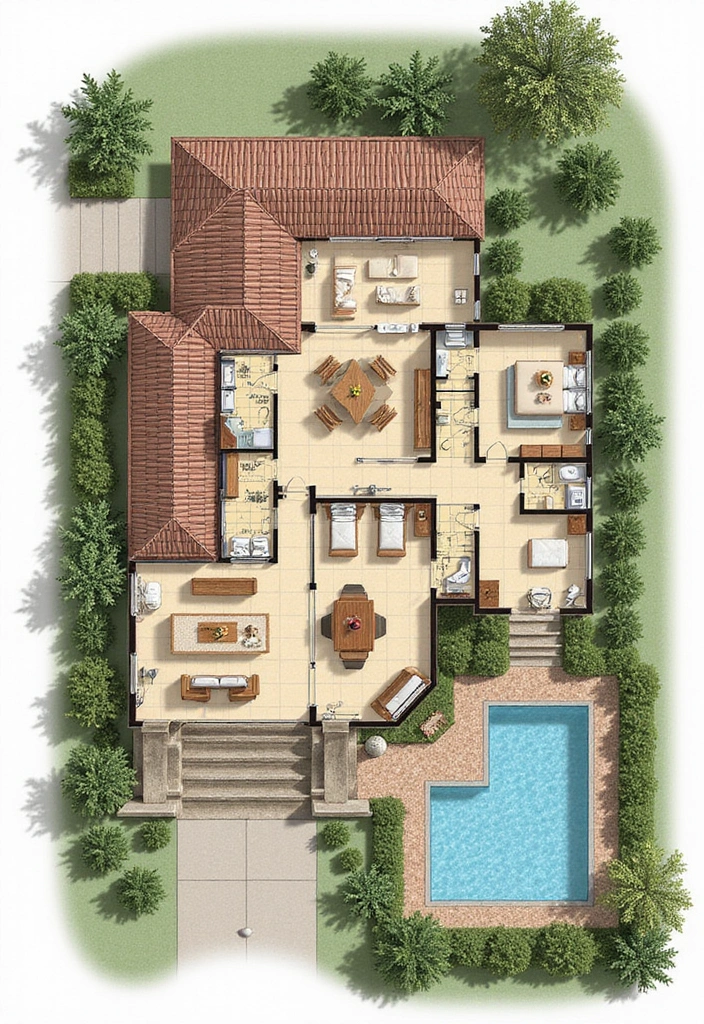
This design draws inspiration from Mediterranean architecture, featuring stucco exteriors and tile roofs.
Spacious common areas encourage family gatherings, while private quarters provide retreat-like spaces.
Courtyards or balconies can be included to enhance outdoor living, perfect for families who enjoy spending time together. Sustainable features such as passive solar design can be integrated to promote energy efficiency.
Consider using drought-resistant landscaping for outdoor areas.
– Utilize natural stone for timeless appeal.
– Incorporate large overhangs for shade.
– Design open-air spaces to improve airflow.
14. The Cottage Retreat
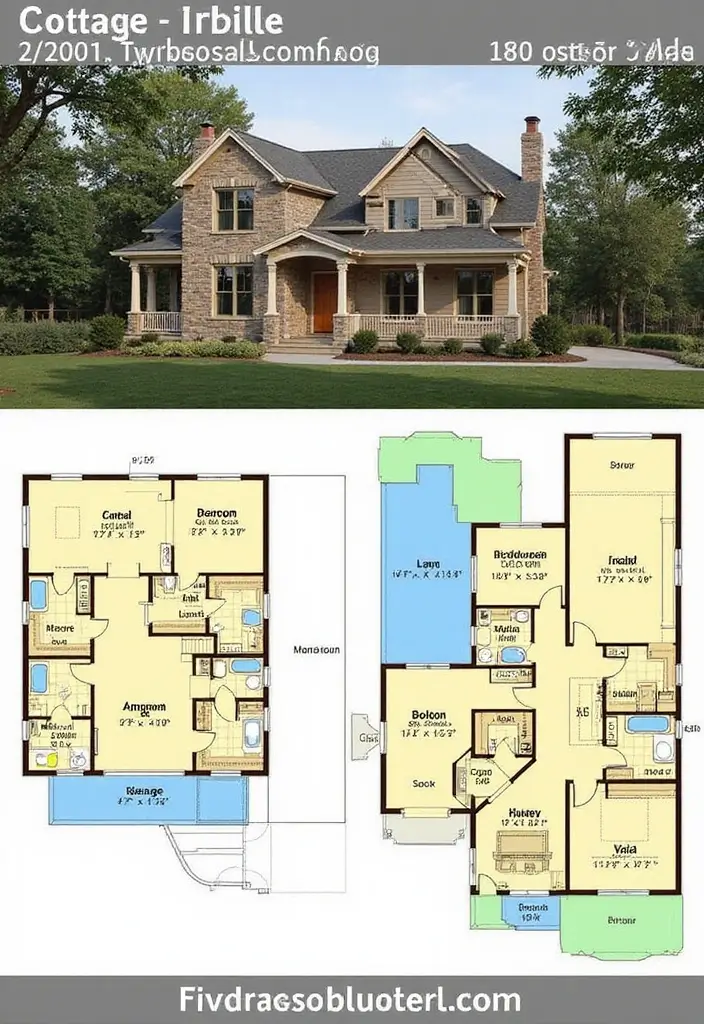
This quaint cottage design offers a cozy atmosphere perfect for family bonding.
A compact, yet efficient layout makes the most of available space, creating a warm and inviting setting.
The open kitchen and dining area promote togetherness during mealtime, while upstairs bedrooms provide peaceful retreats. Sustainability can be woven into the design through energy-efficient windows and insulation techniques.
Consider adding a small garden to promote food sustainability and enhance the home’s charm.
– Use reclaimed wood for rustic accents.
– Incorporate natural light to brighten spaces.
– Design outdoor areas for relaxation.
15. The Contemporary Escape
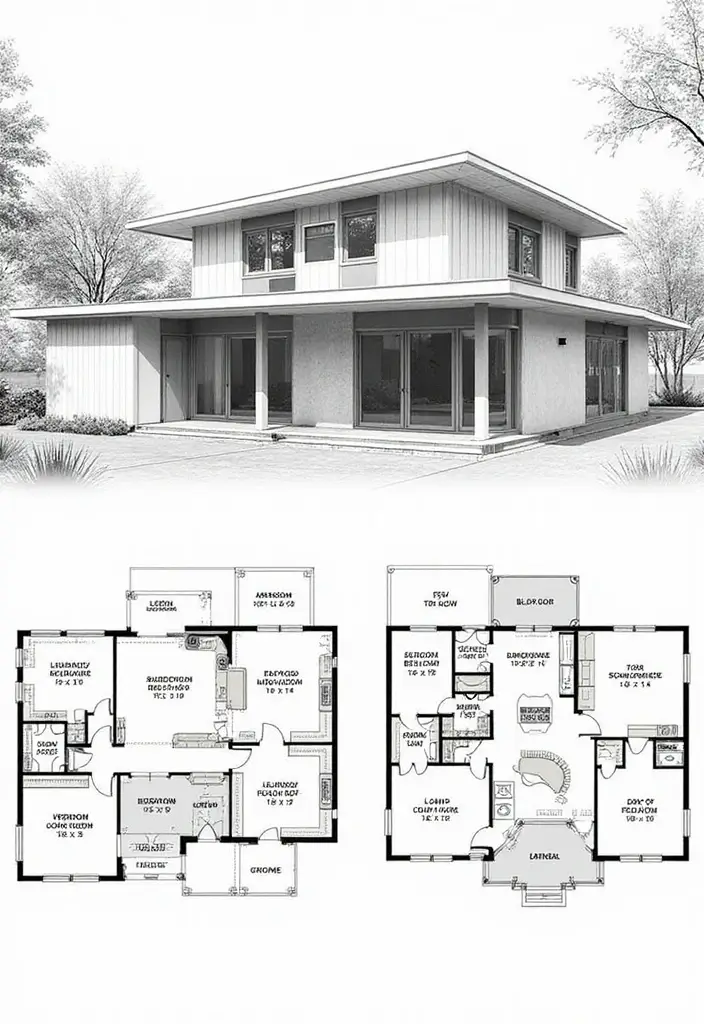
This modern design emphasizes clean lines and functionality, appealing to families seeking a stylish lifestyle.
Spaces are designed to be flexible, allowing for different activities throughout the day. The open-concept living area facilitates family interactions, while private bedrooms provide a tranquil atmosphere.
Incorporate sustainable practices such as using energy-efficient materials and maximizing natural light.
Consider adding a large deck for outdoor family gatherings, encouraging a love for the outdoors.
– Utilize eco-friendly landscaping.
– Install smart home features for convenience.
– Create multi-purpose rooms to accommodate changing needs.
16. The Open-Air Oasis
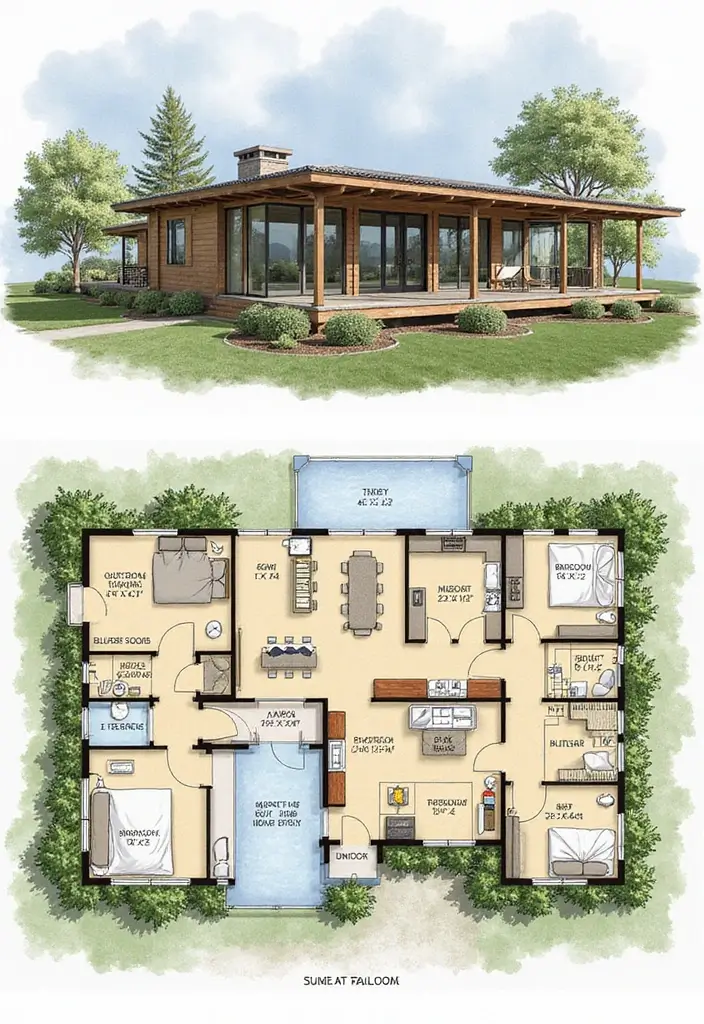
This unique design features open-air elements, bringing the outdoors into everyday family life.
Large sliding glass doors connect indoor spaces with outdoor patios, creating a seamless flow for entertaining and leisure.
Sustainable materials can be utilized throughout the design, and outdoor living spaces can include gardens or vegetable patches to promote self-sufficiency.
A focus on natural ventilation can enhance indoor comfort while reducing energy consumption.
– Use of local materials to reduce carbon footprint.
– Incorporate shaded outdoor spaces for comfort.
– Design open-air areas for family activities.
Open-air living creates a seamless blend of indoor comfort and outdoor serenity. Embrace nature’s beauty in your house floor plans 2 story and enjoy sustainable living at its finest!
17. The Rustic Charm
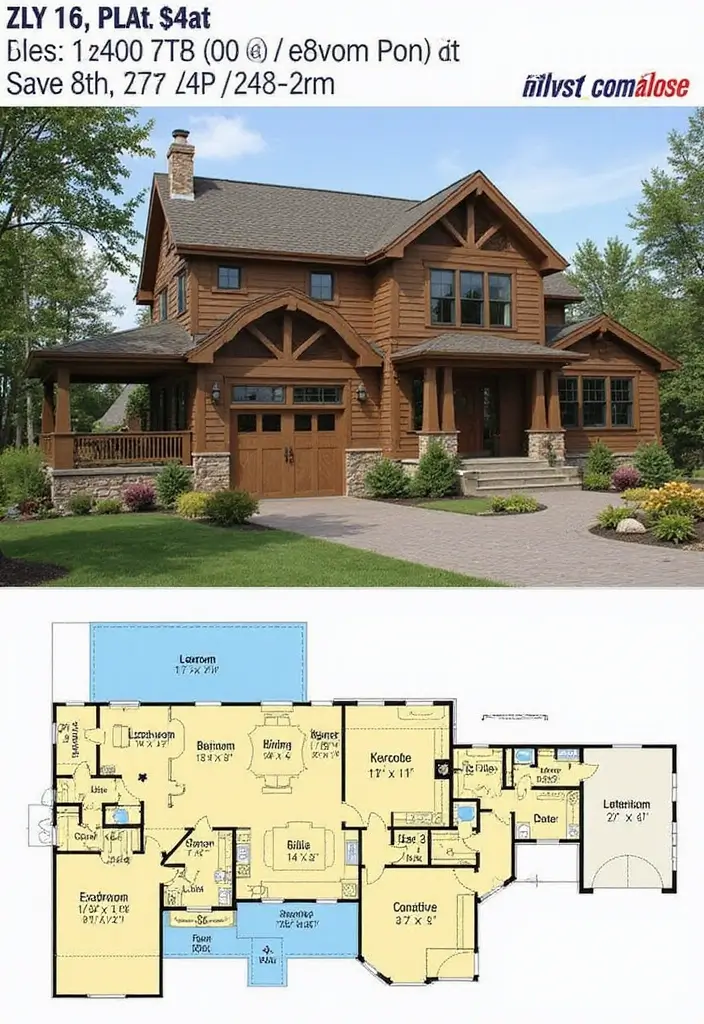
Blending traditional elements with modern efficiency, this rustic design creates a warm family environment.
Featuring exposed beams and natural stone, this floor plan emphasizes coziness and comfort.
An open floor plan encourages socialization, while spacious bedrooms offer privacy. Eco-conscious choices like reclaimed wood and energy-efficient appliances make this home sustainable.
Adding outdoor spaces with fire pits or gardens can further enhance the rustic ambiance.
– Incorporate natural materials for authenticity.
– Use large windows to bring in natural light.
– Design cozy nooks for relaxation.
18. The Elegant Escape
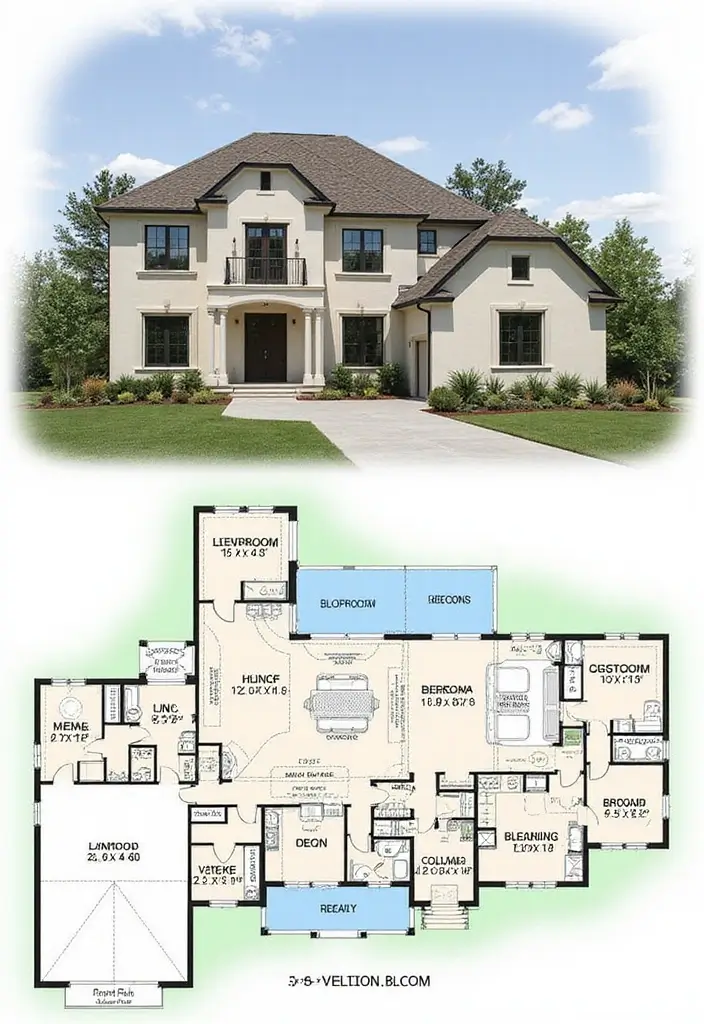
This elegant design combines sophistication with functionality, making it perfect for families seeking style.
The layout allows for fluid movement between spaces, highlighting the beauty of open living.
Adding luxurious touches such as marble countertops and high ceilings can elevate the aesthetic, while still incorporating eco-friendly systems.
Consider energy-efficient windows and smart home technology for convenience.
– Create defined spaces through furniture arrangements.
– Incorporate natural light to enhance elegance.
– Use energy-saving systems for sustainability.
19. The Boutique Family Home
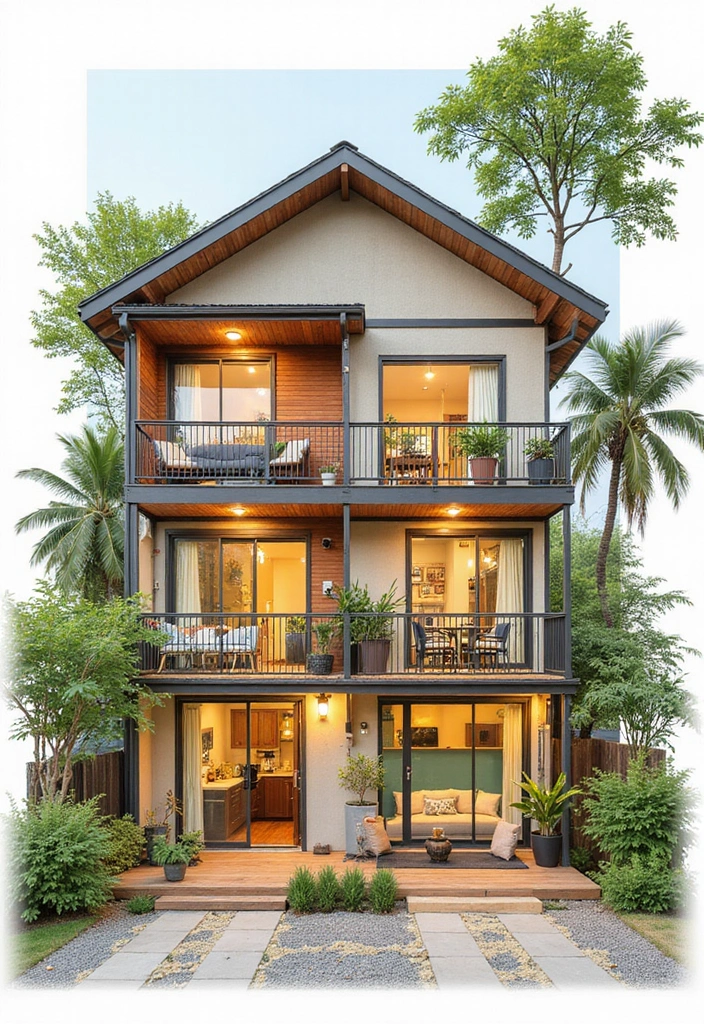
This design reflects the uniqueness of each family while incorporating boutique charm.
It includes distinctive architectural details and playful colors, making it visually striking. The open floor plan keeps the family connected while providing flexible spaces for creativity.
Sustainable practices can be integrated through efficient appliances and unique landscaping choices.
Consider adding a family art studio or workshop to cultivate creativity at home.
– Use bold colors to reflect personality.
– Incorporate eco-friendly materials for authenticity.
– Design spaces for family hobbies.
20. The Artistic Haven
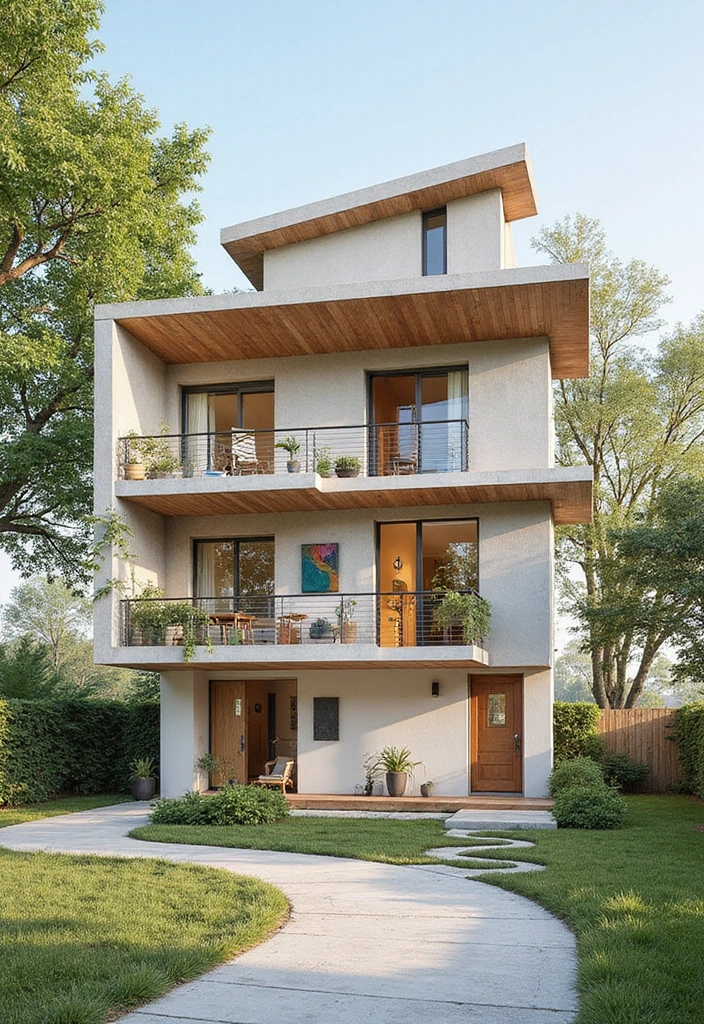
Artistic families will love this home that encourages creativity and expression.
Open spaces and large walls are perfect for displaying family art and projects, while the main living area provides ample space for gatherings.
Sustainable materials can be emphasized through unique art installations made from recycled items. The design can incorporate eco-friendly systems to ensure minimal impact on the environment.
– Include studio spaces for parents and children.
– Design areas for collaborative projects.
– Foster a connection with nature through landscaping.
21. The Peaceful Sanctuary
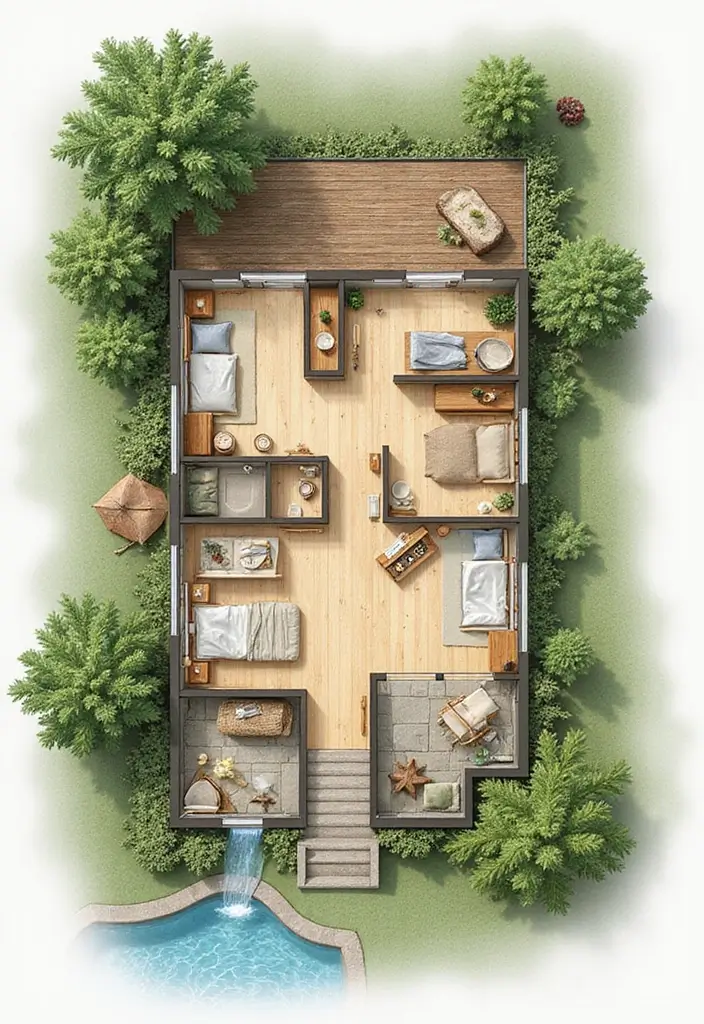
This calming design promotes relaxation and mindfulness, making it ideal for busy families.
With an emphasis on open, airy layouts, this floor plan encourages a serene atmosphere.
Incorporating natural materials, plants, and sustainable energy solutions enhances the calming effect.
Consider creating tranquil outdoor spaces like meditation gardens or reading nooks to enhance relaxation.
– Use soft color palettes to promote calmness.
– Design cozy spaces for quiet time.
– Incorporate water features for tranquility.
22. The Adventurer’s Retreat
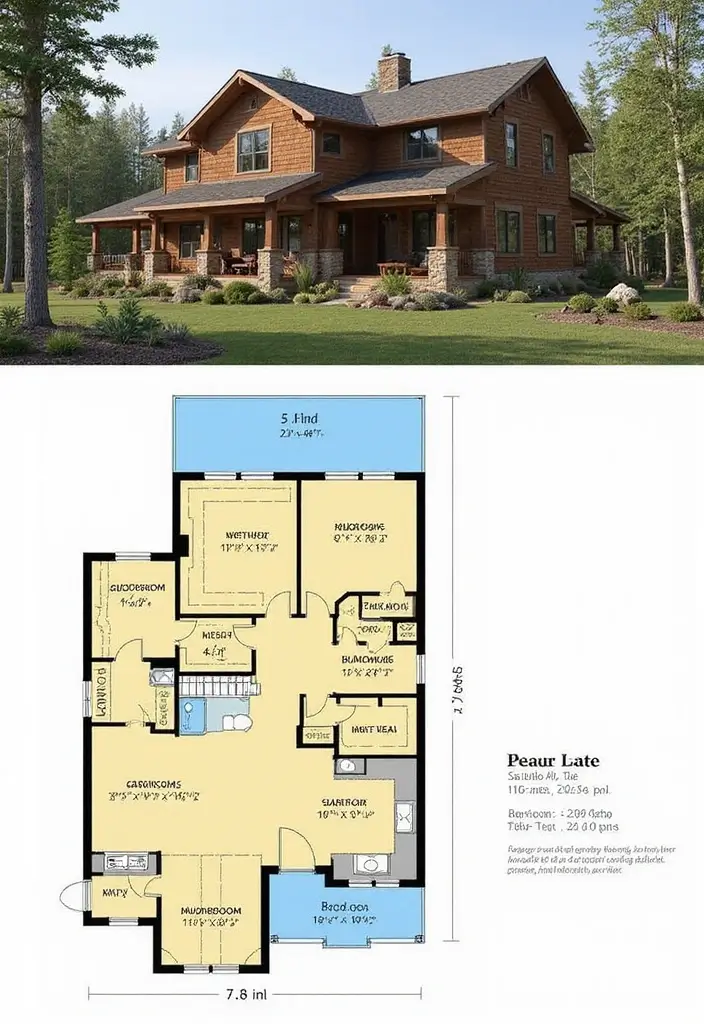
For families who love adventure, this design blends functionality with rugged charm.
The layout includes spacious mudrooms for storing gear, while open-concept living encourages family bonding after outdoor activities.
Sustainability can be prioritized through durable materials that withstand wear and tear.
Consider outdoor living spaces that facilitate barbecues and gatherings after a day of fun.
– Use weather-resistant materials for longevity.
– Create a large garage for storage.
– Incorporate fire pits for evening gatherings.
23. The Family Wellness Home
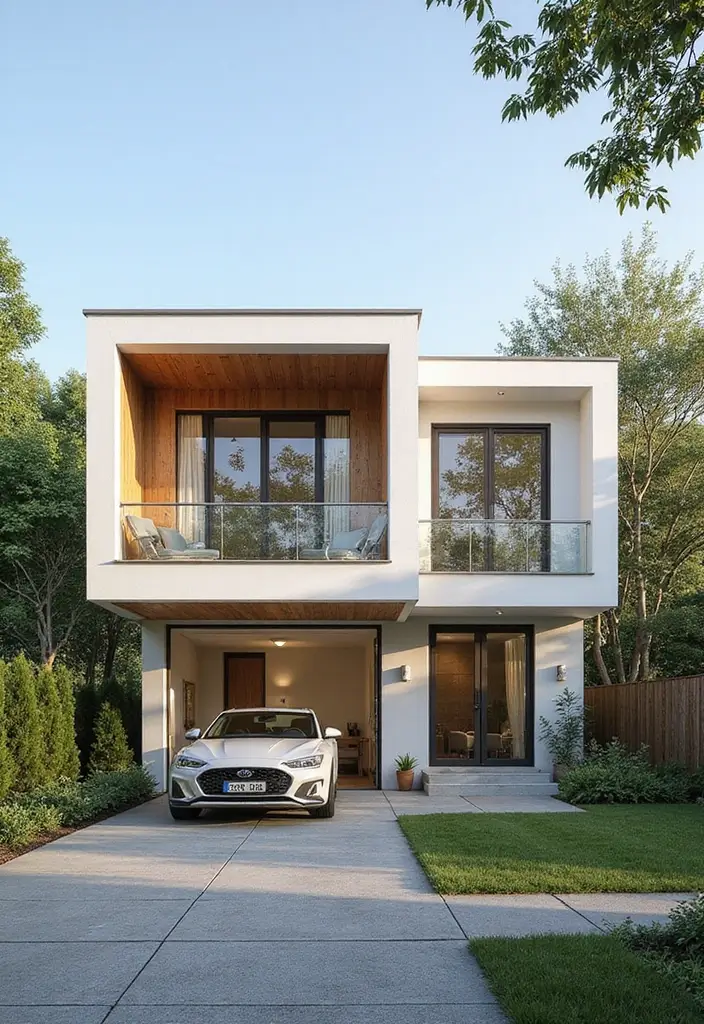
Promoting health and wellness, this home design emphasizes natural light and ventilation.
With an open floor plan that flows seamlessly, the space encourages daily activity while allowing for relaxation.
Sustainable practices can be highlighted through non-toxic materials and efficient energy systems.
Consider adding spaces for fitness, yoga, or family activities to enhance overall wellness.
– Use natural light to promote mood.
– Design with air quality in mind.
– Create zones for different wellness activities.
24. The Timeless Classic
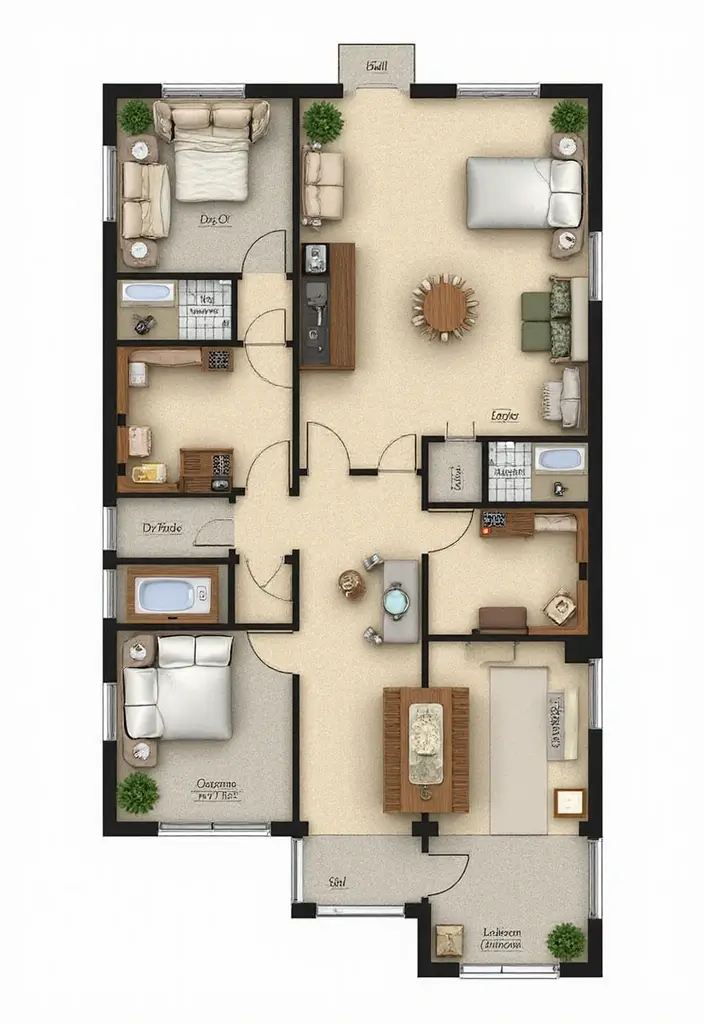
Classic designs never go out of style, and this layout exemplifies enduring elegance.
Spacious rooms and traditional details create a homey atmosphere while allowing for family engagement.
To make this design sustainable, opt for high-quality materials that reduce the need for frequent replacements.
Consider using timeless colors and finishes that will endure through trends.
– Incorporate classic architectural details.
– Use natural materials for durability.
– Design flexible spaces that adapt to family changes.
25. The Biophilic Home
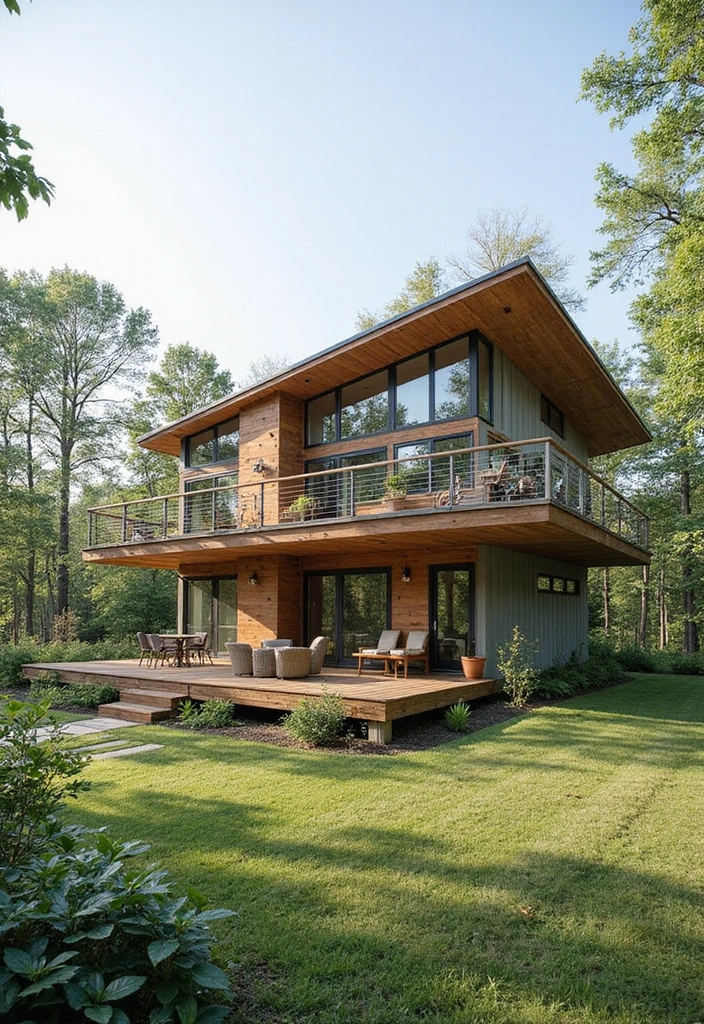
Inspired by nature, this biophilic design emphasizes the connection between indoor environments and the natural world.
Features like large windows and natural materials enhance well-being and create a peaceful living space.
Incorporating indoor plants and green walls can improve air quality and aesthetics. Sustainability can be woven throughout with eco-friendly practices.
Consider designs that prioritize natural light and views of outdoor spaces.
– Use materials that mimic nature.
– Design spaces to encourage outdoor connection.
– Include natural light solutions to enhance mood.
26. The Collaborative Workspace
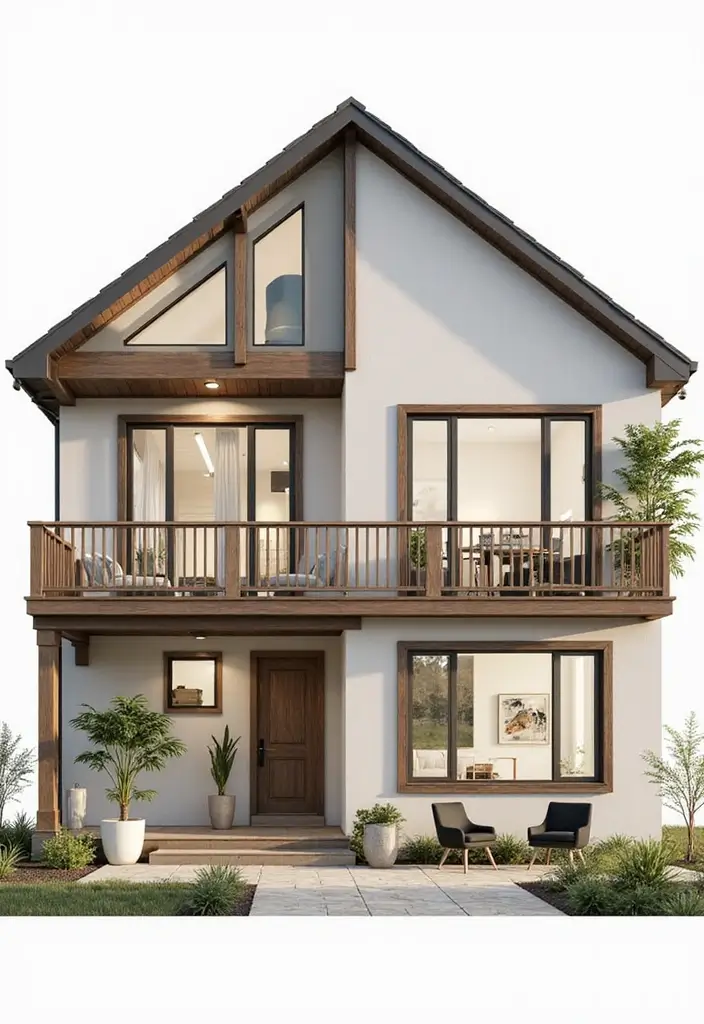
As remote work becomes more common, incorporating a dedicated workspace in the family home is essential.
This design integrates offices seamlessly within the layout, ensuring privacy while being connected to living spaces.
Utilizing sustainable materials for the workspace can also reflect a family’s commitment to eco-friendliness.
Consider creating flexible work areas that can double as study spaces for children.
– Create quiet zones for focused work.
– Incorporate technology solutions for efficiency.
– Design with natural light in mind for productivity.
27. The Solar-Powered Haven
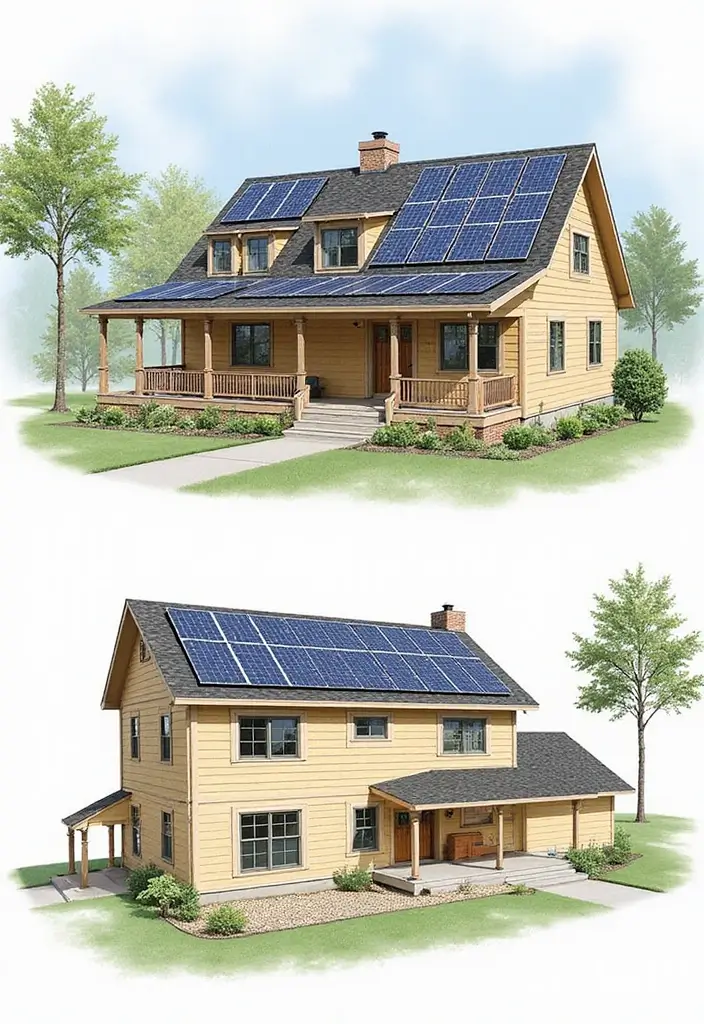
Harness the sun’s energy with this solar-powered design that emphasizes sustainability and innovation.
In this layout, solar panels are integrated seamlessly into the architecture, allowing families to significantly reduce their carbon footprint.
Open spaces encourage family interaction while sustainable systems provide energy-efficient solutions for daily living.
Consider incorporating energy storage systems to maximize solar benefits.
– Design maximizing southern exposure for solar gain.
– Include smart home technology for energy management.
– Use high-performing insulation to minimize energy loss.
Embrace the power of the sun! With eco-friendly house floor plans 2 story, you can reduce your carbon footprint while creating open spaces for family connection. Sustainability never looked so good!
28. The Zen Retreat
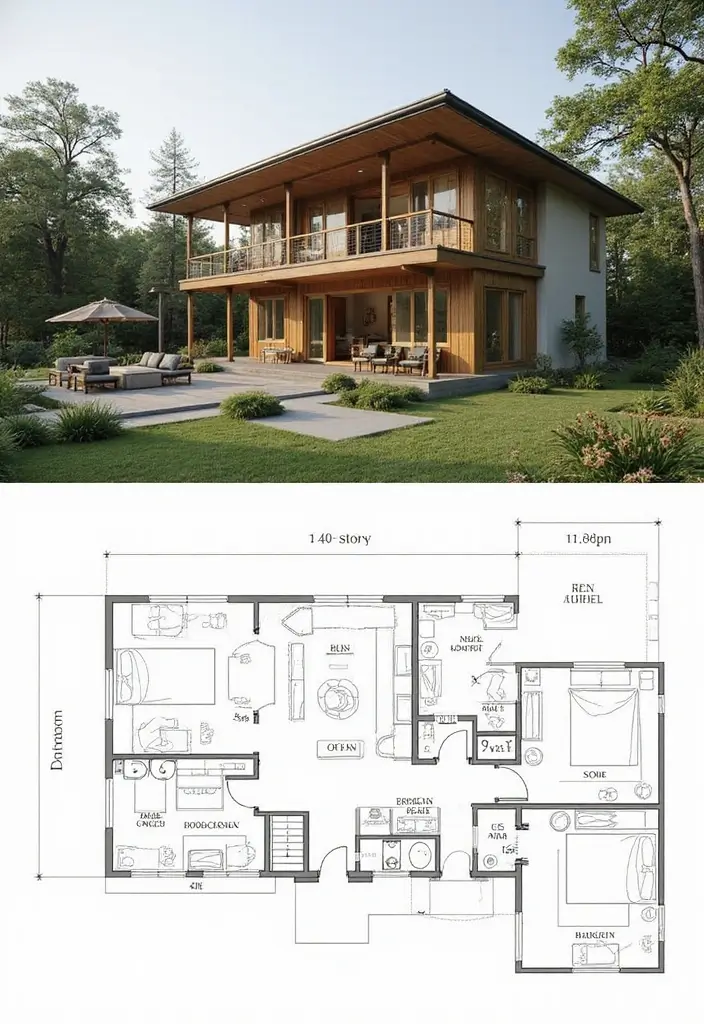
This design focuses on tranquility and mindfulness, creating a peaceful retreat for families.
Simple lines and open spaces encourage calm, while natural materials enhance the serene atmosphere.
Incorporating water features and green spaces can foster relaxation and well-being. Sustainable practices, such as rainwater collection systems and efficient insulation, ensure minimal environmental impact.
Consider creating indoor gardens for added serenity.
– Use natural color palettes to promote calmness.
– Design spaces for meditation and reflection.
– Incorporate outdoor rooms for peaceful retreats.
29. The Cozy Family Cabin
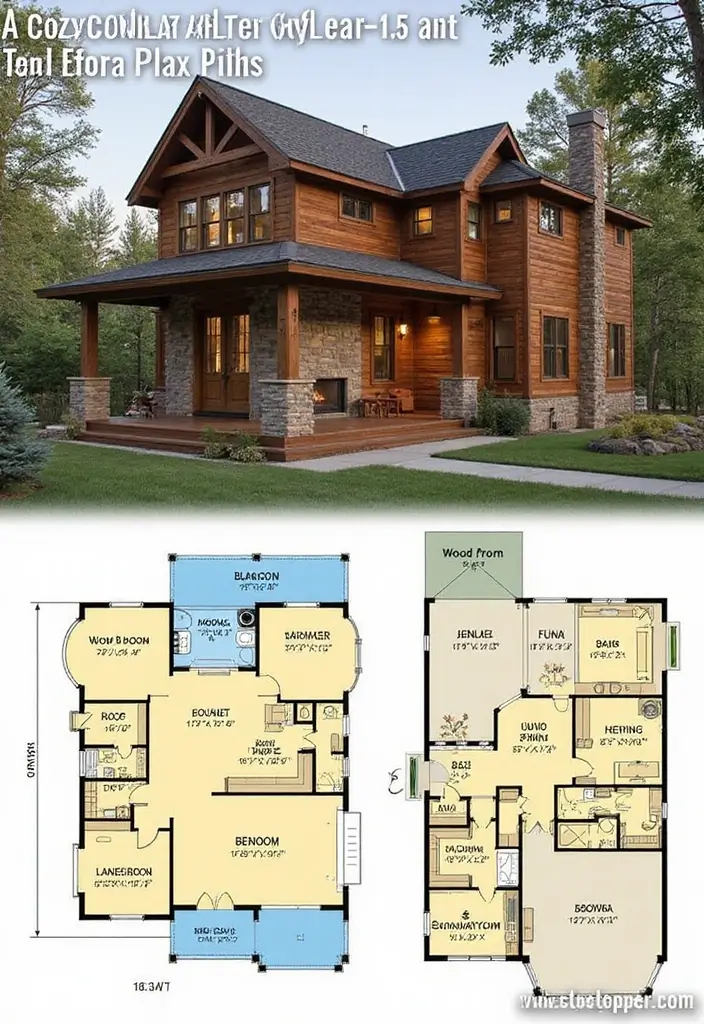
Capturing the essence of a retreat, this cozy cabin layout is perfect for families who love the outdoors.
With a welcoming fireplace as the centerpiece, the design encourages family gatherings and relaxation.
Utilizing sustainable wood materials can reinforce the cabin aesthetic while promoting eco-friendliness. The layout can include spaces for activities, such as game rooms or reading nooks, for family downtime.
Consider expansive windows that bring the beauty of nature inside.
– Utilize natural insulation techniques.
– Design communal spaces for family interaction.
– Embrace rustic elements for charm.
Conclusion
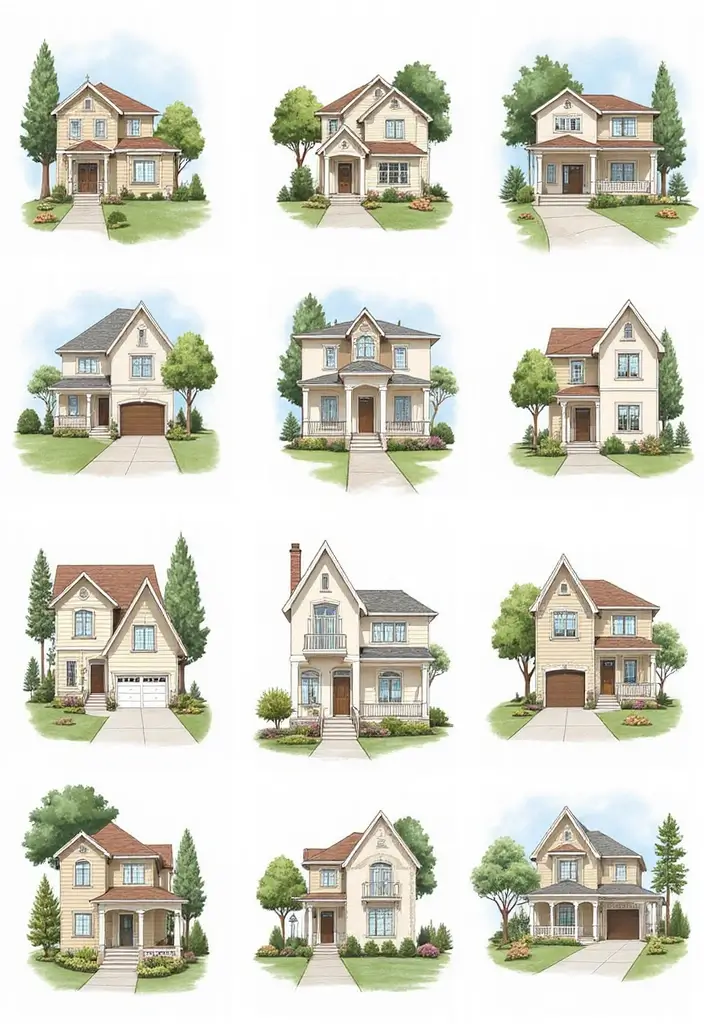
Choosing the right two-story house floor plan is an important step in creating a home where families can thrive together.
By incorporating eco-friendly designs, sustainable materials, and spaces dedicated to family bonding, your new home can be both a personal retreat and a responsible choice for the environment.
Explore these diverse concepts and let them inspire you to create a family-friendly sanctuary that aligns with your values and lifestyle.
Frequently Asked Questions
What Makes a Two-Story House Floor Plan Family-Friendly?
A family-friendly two-story house floor plan typically features spacious living areas that foster connection and interaction.
These designs often include open floor plan ideas that seamlessly link the kitchen, dining, and living spaces, creating an inviting atmosphere for family gatherings. Additionally, having bedrooms on the upper floor can provide privacy for family members while keeping communal areas accessible on the first floor.
How Can Eco-Friendly Features Be Integrated into Two-Story House Designs?
Integrating eco-friendly features into your two-story house design is easier than you might think!
Consider using sustainable materials like bamboo flooring and recycled steel, or incorporating energy-efficient appliances. Solar panels can also be a great addition to harness renewable energy. Many of the floor plans featured in the article showcase designs that emphasize natural light and air circulation to reduce energy consumption, making them perfect for a sustainable lifestyle.
What Are the Benefits of an Open Floor Plan in a Two-Story House?
Open floor plans in two-story houses create a sense of spaciousness and enhance the flow of natural light throughout the home.
This layout is particularly beneficial for families, as it allows for easy supervision of children while cooking or entertaining. Plus, it provides flexibility for arranging furniture and maximizing functional family spaces, making daily activities more enjoyable and efficient.
How Do I Choose the Right Two-Story Floor Plan for My Family’s Needs?
Choosing the right two-story floor plan involves considering your family’s size, lifestyle, and future needs.
Ask yourself questions like how many bedrooms you need, whether you want dedicated office space for remote work, or if you have plans for a growing family. The article features various family-friendly house designs that cater to different preferences, from the compact yet functional layouts to spacious homes emphasizing togetherness.
Are There Specific Design Elements That Enhance Sustainability in Two-Story Homes?
Absolutely! Incorporating elements like large windows for natural light, energy-efficient appliances, and proper insulation is key to enhancing sustainability.
Floor plans that include features like green roofs or rainwater harvesting systems can also significantly boost your home’s eco-friendliness. The article showcases designs that cleverly blend style with sustainability, making them ideal for families looking to minimize their environmental impact.
Related Topics
house floor plans 2 story
family-friendly designs
eco-friendly homes
modern two-story layouts
open floor plan
spacious designs
functional family spaces
sustainable living
multi-generational homes
urban eco-haven
customizable layouts
minimalist design

